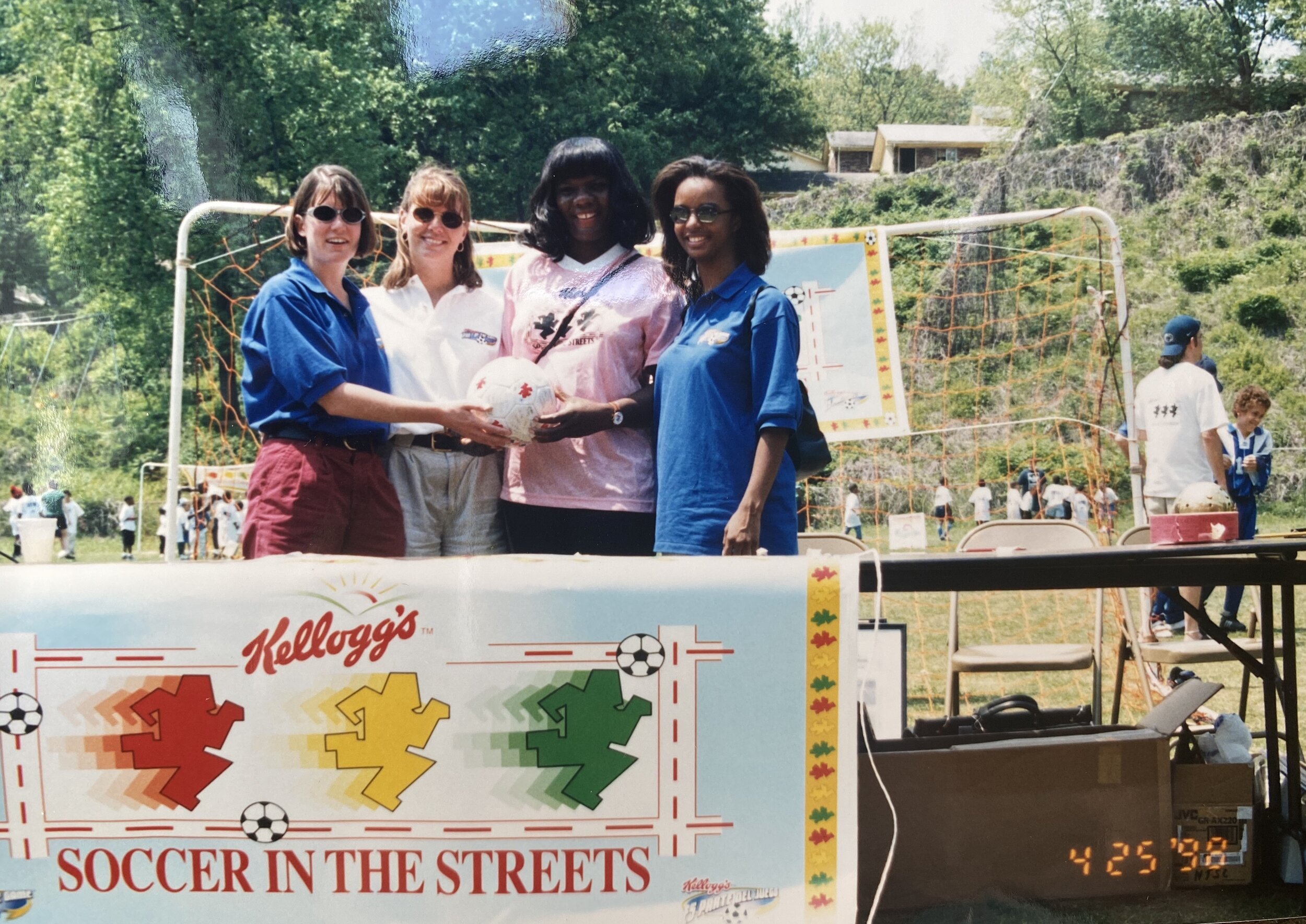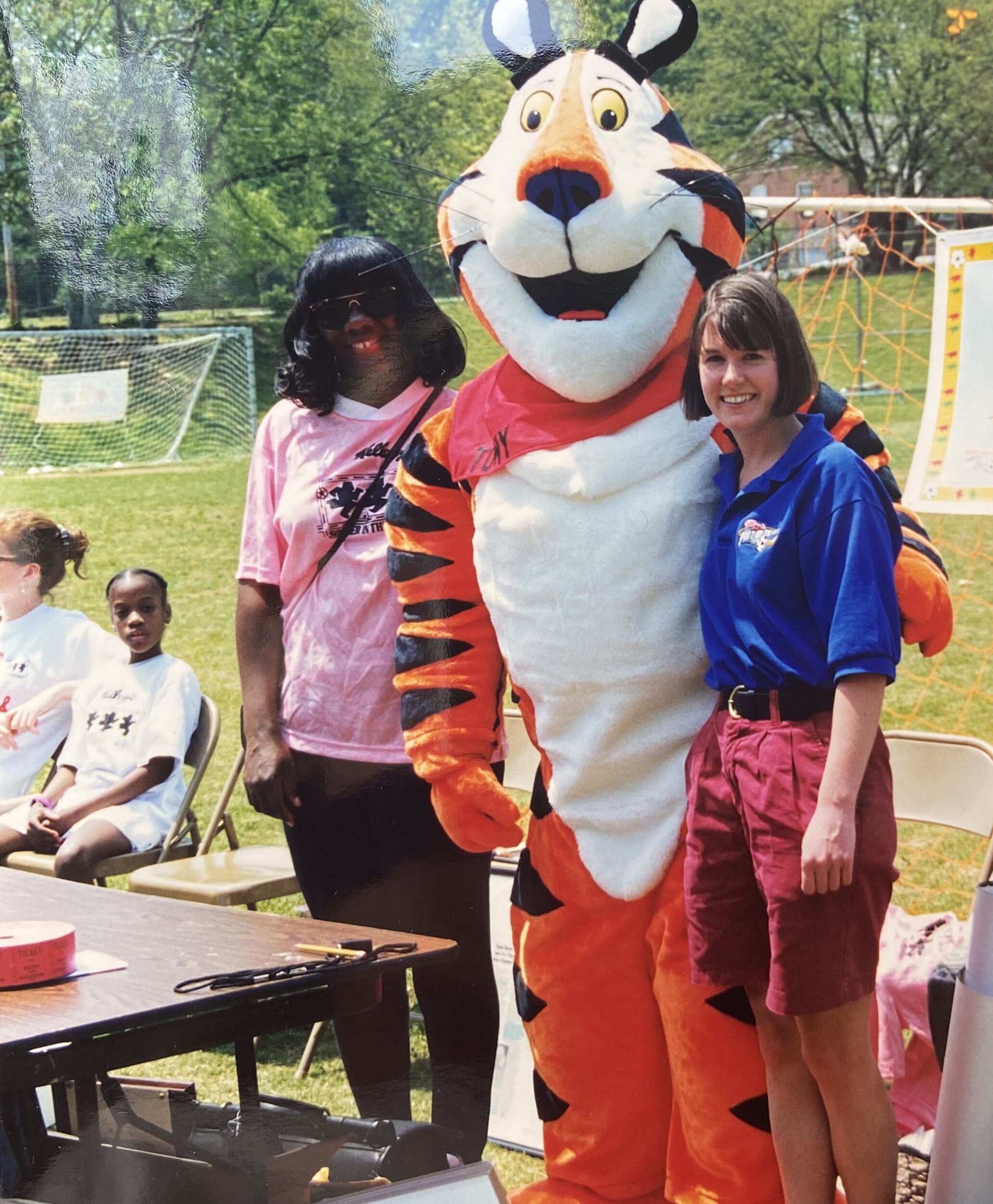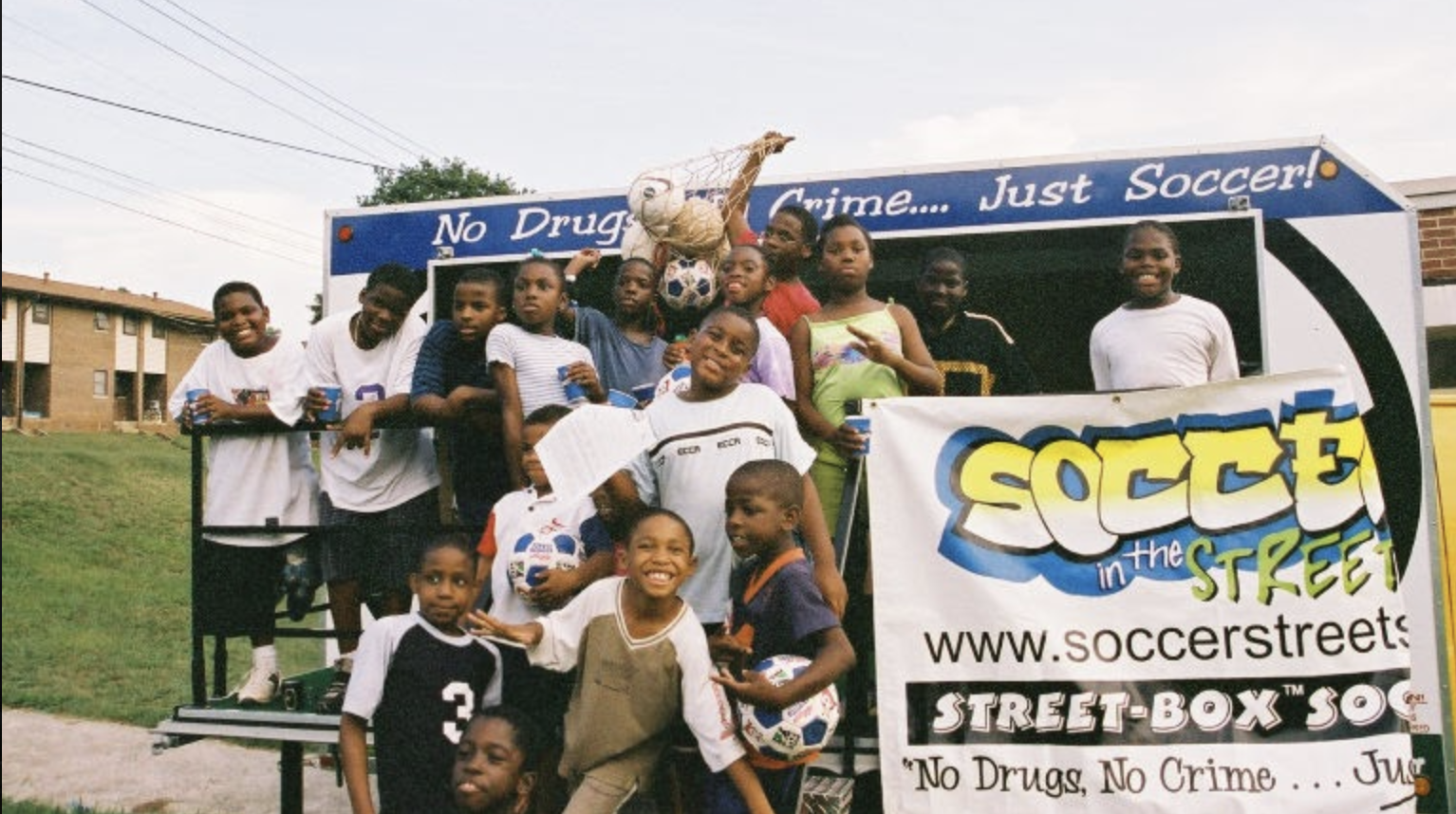The Story of Soccer in the Streets:
Q&A with Founder Carolyn McKenzie
"I grew up in an underprivileged home. I wanted to take part in dance and play sports like other kids, but I couldn't. I wanted to have the same opportunities but they weren't there. Kids are fragile and they don't know what they're missing, so it's up to us to provide them with opportunities. If we can tap into their natural talent we can help them succeed. If we expose them to opportunities, they will take advantage of them." - Carolyn McKenzie
Soccer in the Streets draws on over 30 years of experience in developing sports-based youth development programs in low-income communities. SITS pioneered the idea of combining soccer with education, life skills, and community development, going where “no soccer program has gone before.” The organization was founded by Carolyn McKenzie in 1989 in Jonesboro, GA. Although it now focuses on the Atlanta market over its history it has worked in over fifty US cities bringing the sport to hundreds of thousands of kids. Soccer in the Streets caught up with the founder, who shared some insights about our past, present, and future.
Here's the story in the words of Carolyn…
Soccer in the Streets: How did it all begin?
Carolyn: “People laugh when I tell them how it started ... I was attending a meeting at the Overlook building in Marietta. I was in the cafeteria … and this guy next to me started up a polite conversation and we started talking about life.”
“I spoke about how I enjoy community service and he mentioned that Atlanta has a professional indoor soccer team. He also mentioned that the president of the team, Bob Moreland, wanted to do an inner city soccer program. He took me upstairs to meet him and he had this idea of inner city soccer and we discussed it. Then he mentioned helping him with a strategic plan and how it could be great with my passion and drive for community service projects and him being a soccer enthusiast. After that meeting, I went home and typed out at the start of my plan. I had a vision that ‘Soccer in the Streets’ would become a household name worldwide.”
After this fortuitous meeting with Ron Terwilliger, founder of the Atlanta Attack and former professional player, Carolyn McKenzie founded Soccer in the Streets (SITS) in 1989 in Jonesboro, GA. After learning that soccer is the world's most popular sport, Carolyn wondered why this popular sport was not being played by children in public housing. When she learned that the game had simple rules and could be played anywhere, she decided to introduce it to children who traditionally played basketball and football.
Carolyn: “Growing up as a daughter of sharecroppers in rural South Georgia, I saw the need for a program that could build and mold the character of young people while positively impacting their families.”
Tell us about the early years of Soccer in the Streets…
“I learned at an early age that I had a mind for business. I used that acumen to establish and build Soccer in the Streets. I started off stuffing envelopes at the Atlanta Journal Constitution building with information on the organization and sending them out myself.
Even though I didn’t know much about soccer, I didn’t care. I wanted to be there for the kids. They didn’t have accessibility and they couldn’t afford the equipment, so I came up with Soccer in the Streets. I learned about soccer, then combined it with community service. My PR skills helped.”
With that skill and tenacity, Carolyn brought together a board of directors in Atlanta that consisted of government, corporate, and soccer organization leaders. The founding board included representation from Turner Broadcasting, Delta Airlines, Georgia Power, Fulton County, City of Atlanta, State of Georgia governor’s office, YMCA, soccer retailers, Atlanta Attack (professional soccer team), Boys & Girls Club and the Lovett School.
The first program kicked off in Atlanta in 1990. The first “Super Soccer Show” rolled out at the Harland Boys & Girls Club in Atlanta’s Westside. The program specialized in introducing the game to young people while involving their parents in the development and implementation. Volunteer coaches ran “Soccer 101” clinics through Boys & Girls Clubs, parks & recreation facilities, and public housing communities.
”We were the only soccer program that went into public housing in the US. Boys and Girls clubs, Housing Authority, Public Housing communities, Police Athletic League, [all of those] social service agencies because they were targeting those kids. We just brought the program there.”
“‘Kick drugs and crime out of our community. Get involved with Soccer in the Streets!’ We had that slogan, which was a big hit. When we worked with San Fransisco housing authority, we went to the kids in the ‘hood, the roughest kids in the neighborhood. Crips and bloods [gang members] would guard the kids while they played soccer.”
“The L.I.F.E. program - Learning is Fun and Exciting was a pilot program. We created this program to help the parents. In order to participate in soccer, they had to work in the LIFE program. Basic school topics. Competitions and answer questions, so we knew how much they retained. I just wanted to be with the kids and help them. That’s what meant the most to me. Creating a program that would have an impact.”
“Education is so important. I kept schoolwork a priority along with soccer so the kids couldn’t be in a gang. I had to sell them on a future and something practical. The kids didn’t really leave their hometowns or even their communities, so we have to help them realize what else is out there. Students from colleges helped the kids in the program, like Morehouse in the West End.”
Once things took off, where did the organization go from there?
“My passion plus the hype around the US hosting the 1994 World Cup helped the organization attract major sponsors and expand programs to other cities. National news and magazines blew it up. We made the front page of the AJC. Then a sponsor paid me to make a manual called ‘Soccer 101’. People were calling, ‘Come do it in my city.’ I had a relationship with Delta Airlines, which provided tickets to fly around [the country] to pitch my ideas and train local program directors.”
By the end of 1996, SITS ran activities in over fifty U.S. cities, bringing the sport to thousands of kids. Sponsors such as Coca-Cola, Kellogg’s, Adidas, Nike, and McDonald’s supported events and introductory programs throughout the United States. A national board of directors and notable national organizations also stepped up during this time to support Soccer in the Streets.
”We were making a national footprint. We were passionate about helping kids in the inner cities with drug and crime prevention. The kids had no accessibility or money to play the beautiful game of soccer. A lot of people in other cities shared this same passion, so it grew.”
In the 1990s, SITS grew to be a nationwide, non-profit agency that developed soccer, educational, and life-skills programs for children in public housing, and other low-income communities. Carolyn retired from Soccer in the Streets in 1999.
Over the next decade, the organization refocused its efforts on Atlanta and on creating year-round, innovative programs. In spite of limited resources, Soccer in the Streets continued to serve thousands of kids throughout the metro Atlanta area in schools, parks, and community centers.
Today, the organization now impacts 5,000 kids annually and launched the award-winning StationSoccer initiative in 2016.
What are some final words you have for the Sits community?
“As we are living in an uncertain time right now, I want the SITS community to know that we are all in this together. Along with the Black Lives Matter movement, it was like what we had back then with drug and crime prevention. SITS now has an opportunity to use the climate of racial division to offer hope to the inner cities.”
Where is Soccer in the Streets now?
Since the early 2000s, Soccer in the Streets has been focusing its efforts on low-income communities in Atlanta, GA. Today, SITS develops young leaders so they can lead rich lives and cultivate healthy communities through innovative sports-based youth development programs.
Soccer in the Streets launched the award-winning initiative StationSoccer, the world's first network of soccer fields located at major transit stations. StationSoccer has become a blueprint in Atlanta for addressing accessibility - both to fields and adequate transportation - by connecting soccer facilities at and through public transit. Like in years past, Soccer in the Streets is leading the way with ideas and solutions that reach kids who are often overlooked or under-resourced and kids are even growing things in community gardens through the Garden FC program.
Today, Soccer in the Streets has come full circle and could roll out its model in more U.S. cities and connect the youth of America to the beautiful game of soccer!









